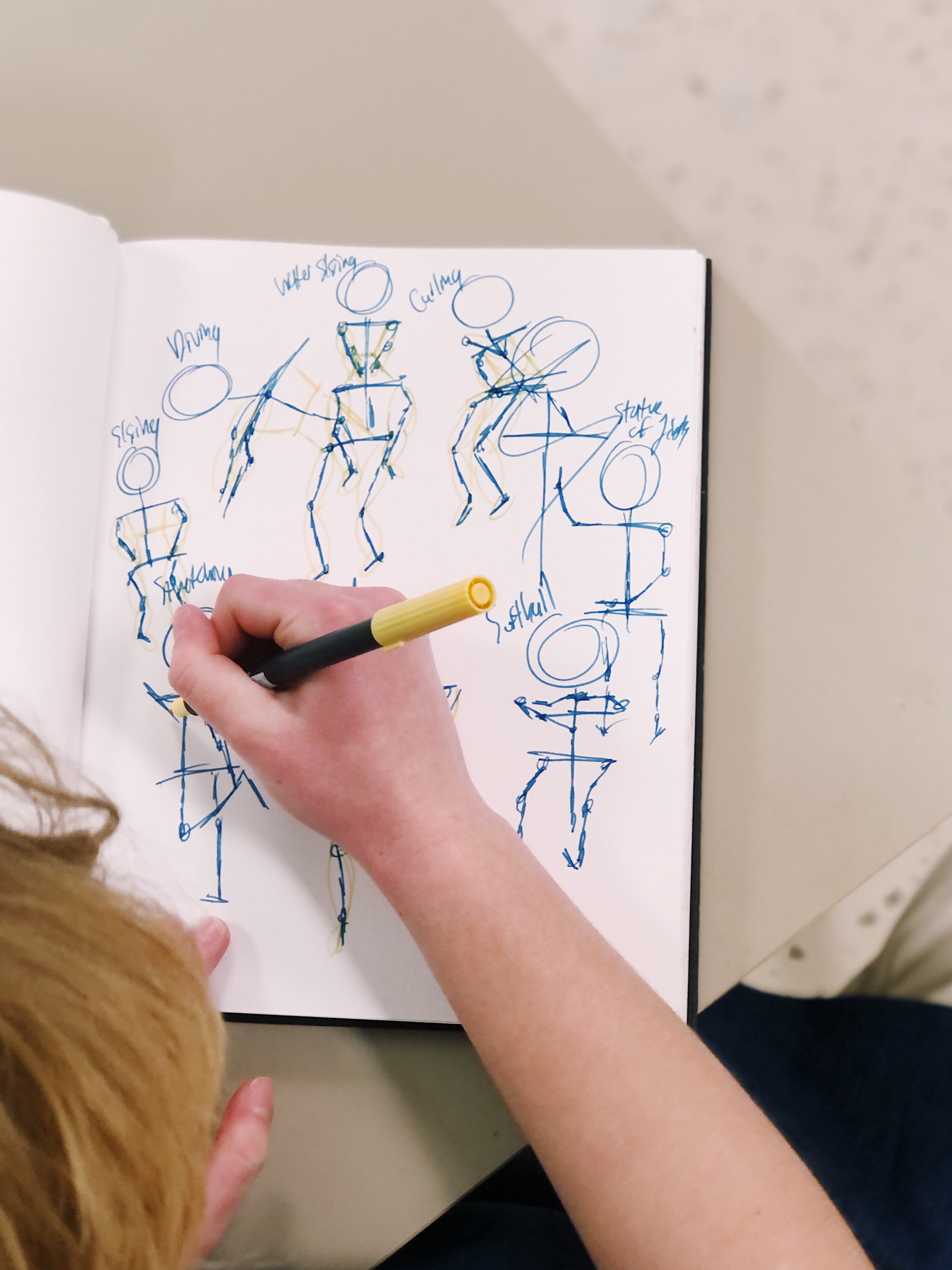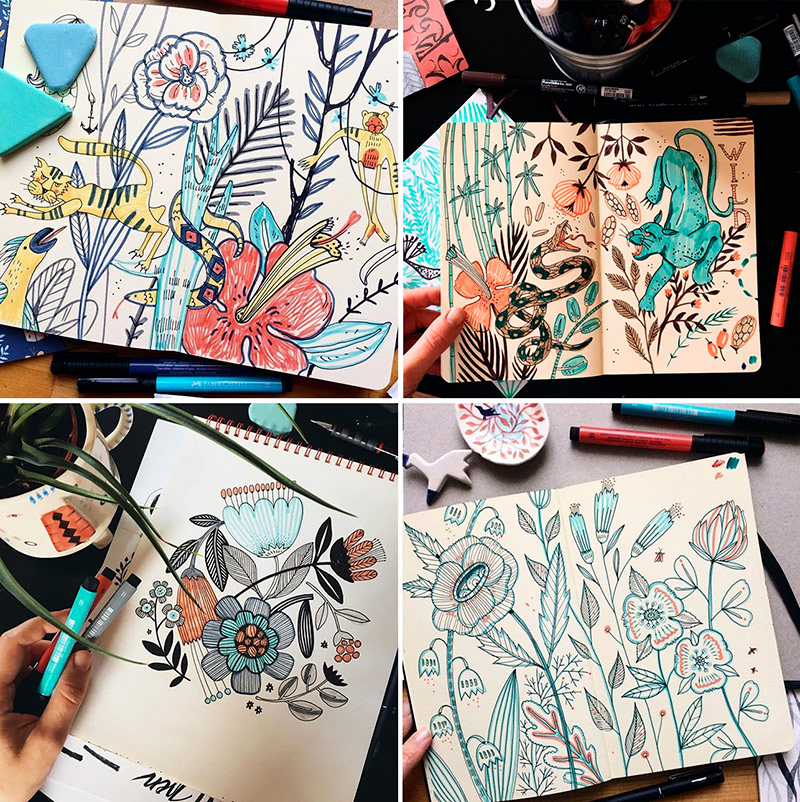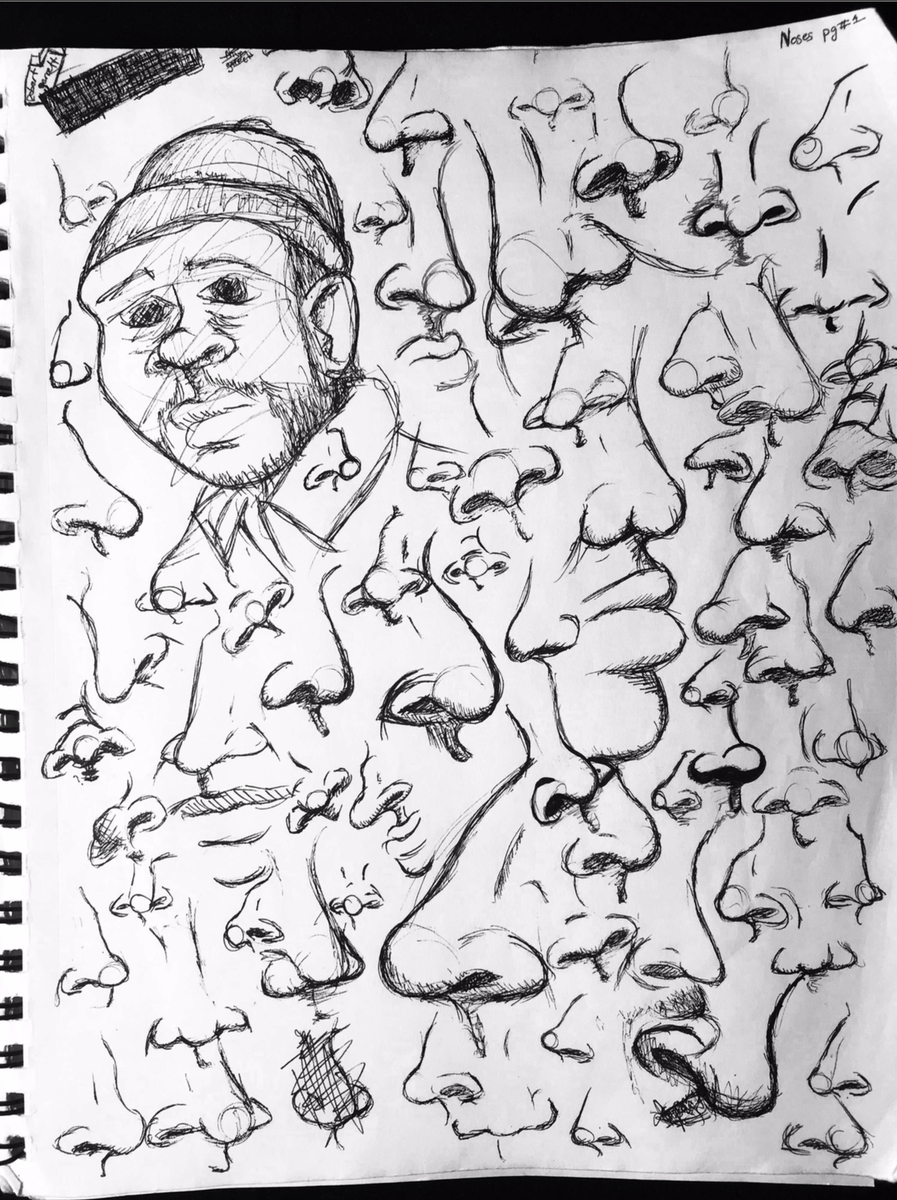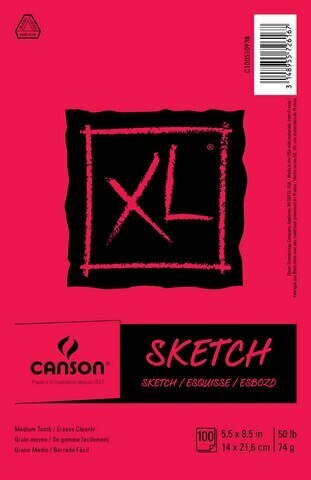Regular Sketching is Not Just About Becoming a Better Drawer
Posted by Kate Manville-Schwartz on Apr 11th 2021
Even ten minutes a week of regular sketching can make you a better artist!
At Kate's Art School, I'm making more of an effort to encourage sketchbook usage in every class and at more ages. Sketchbooks and journals alike, are a great place to collect ideas, especially if you show up regularly to use it. Even I can fall into the mindset that I need to have an idea before I start to write or draw in a sketchbook, but that's not the case. You only need a prompt, not a full-fledged idea.

Since January, the teen class has been sketching openly, weekly, for ten minutes at a time. I give them a word or concept to explore openly for ten minutes: "dwellings," "messages," "grids," etc and we see where our mind goes. Often times, the assumption is that if you draw regularly, you'll become a better drawer, and although that's true, that's not my biggest hope for my students. My biggest hope is that they'll get better at exploring the many facets of their minds. The way to do that is not just by drawing, but by talking about what everyone drew in that time period. In a 1.5 hour class, we spend 10 minutes of prompted drawing and writing, and two minutes each to share things in our sketchbook (or phone), that we have created or other artists have created that we are studying and learning from. Next year, I plan to have students aged 8-12 bring a sketchbook too.

Side note: I do allow writing because again, my biggest hope is to explore the many facets of our mind, and although drawing is a deeper way to do that because words in their literal meaning do not exhaust the depth of our understanding of a concept, writing can be very effective for exploring concepts.
In our teen classes, we also tape a lot in our sketchbooks. I keep washi tape on hand and handouts are often presented to the students to keep in their sketchbooks. Sketchbooks can be a great place to collect artifacts that support growth, but phones are also a great place to collect inspiring images/videos/ideas, because we carry them with us more prevalently then our sketchbook, and we spend a great deal of time on them. I would argue that you need both a phone and a sketchbook for different reasons: phones for unprompted collection, and sketchbooks for intentional and physical idea collection.

Sketchbook paper should be better quality than computer paper, but not by much. Computer paper does not hold graphite or loose pigments like graphite well, because it was created to hold ink. Sketches are not finished ideas, they're first, second, third, and fourth drafts of ideas. Sketchbook paper should come in a larger quantity like 100 sheets or so. You should not feel bad running through sketchbook paper...it should feel very expendable.
At Kate's Art School, we sell two sizes of sketchbook paper, at 100 sheets a pad: 11x14" and 5.5x8.5"


This summer, we're offering two different sessions of a class called "The Summer Sketchbook Challenge": first half of summer and the second half of summer. In this Seven Week course, adults and teens that are 16 years plus, are invited to join Kate for 45 minutes each week and make art a practice. This class is right before Open Studio, and students are encouraged, but not required to join us for that too. During classtime, we'll use the sketchbook to explore how to make our art practice a vital one. We'll draw and paint in experimental ways, find inspirational images to include in our sketchbooks, look at where we've been and where we might go, and consider how to grow our ideas for our art. We'll also grow our drawing skills and discover our own best strengths so we can build on them. During our time, we'll also talk about these common roadblocks, for artists:
1. What can we do when we feel blocked?
2. How can we overcome the inner critic or feelings of inadequacy?
3. How can we find the time to make art in the midst of busy lives?
4. How do we find our own style in our art?
5. What are great reasons for making art?
6. How do we keep our art practice vital?

